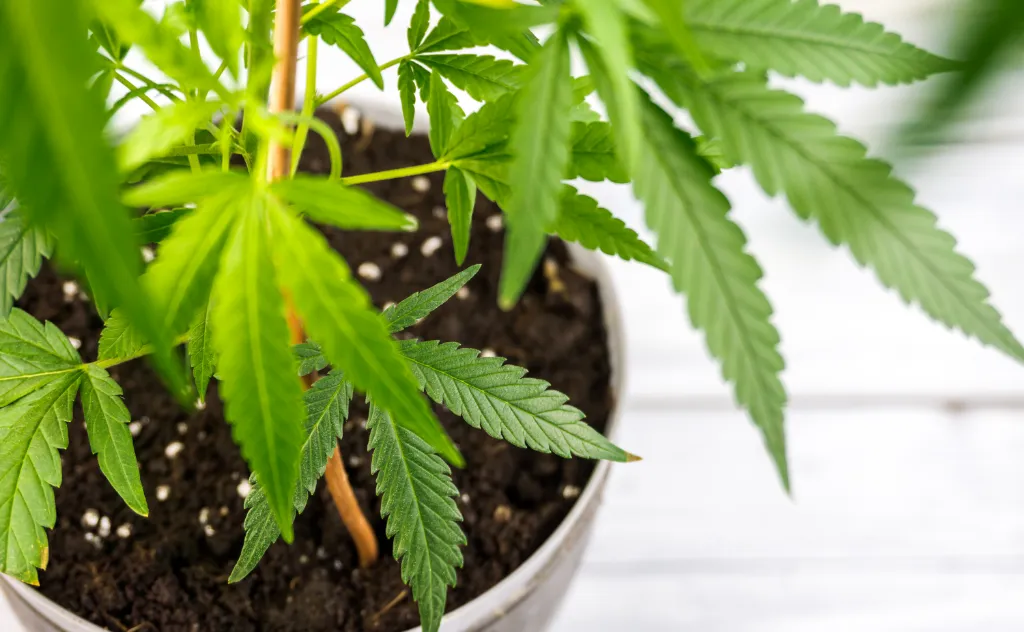Hemp is a plant with a very ancient history. It was already used thousands of years ago in the East for its countless properties. It is rich in natural nutrients and antioxidants that make it a valuable source of well-being. Today, it is renowned not only for its properties, but also for its versatility, as all kinds of products are made from its parts.
There are many varieties of hemp, each with its own particular characteristics, but the most famous are surely the sativa, indica and ruderalis. The former, in particular, is probably the best known and most widely used, but at the same time it is the one about which there is most confusion, because it is immediately associated with marijuana and everything illegal that revolves around it.
In this article we will try to get to know sativa hemp better, explaining its peculiarities and effects and listing which types of products, 100% legal, can be obtained from it.
What is legal sativa hemp?
Hemp sativa has been cultivated since ancient China, but according to recent research, it seems to have been well known in the Mediterranean area as well. However, the first in-depth studies on this plant were carried out in 1700, when the French biologist Jean-Baptiste Lamarck analysed and classified it, placing it in the equatorial zone of Asia, America and parts of Africa – where it is still found today.
Hemp sativa belongs to the Cannabaceae, a category of dicotyledonous angiosperms, i.e. plants with a true flower (in this case without petals) and a seed protected by a fruit. It is a very strong and robust plant of the cannabis family, and is both male and female. It can be up to 7 metres tall and boast long branches and very narrow leaves, easily recognisable at a glance. It adapts without too much difficulty to its environment and withstands long summers, i.e. heat, humidity and pests, from which it protects itself thanks to its thick buds.
Its robustness and high resistance to water made the plant perfect, in times past, for making ropes, but today, thanks to its low THC content, it is better suited to industrial processing; it is exploited all over the world for its extreme versatility, for medical uses or to create various products.
Difference between indica and sativa hemp
There are several types of hemp and it is not always easy to distinguish between them, particularly if we consider cannabis sativa vs. indica; yet looking closely at them we can see several differences.
Firstly, indica grows very far from hot and humid areas, in high altitude, cold and dry places such as Nepal and India, where it is typical. By adapting to these climates, it has the ability to flower more quickly while taking up less space and is therefore more functional for indoor cultivation and obtaining multiple harvests in a short time.
Visually, it is also easy to recognise that the indica, unlike the sativa, does not grow very tall (2 metres maximum) and composes a dense but rather bushy structure, producing wide, lush fan-shaped leaves.
Where is hemp sativa found?
Hemp sativa is a versatile plant with a long history of use in various sectors, as we shall see, from the production of textile fibres to use in food and cosmetics. Native to Asia and the Middle East, hemp sativa has been cultivated for thousands of years and is now found in various parts of the world.
Today, the cultivation of hemp sativa is widespread in Italy, France, Russia, and many Eastern European countries such as Hungary, Poland, Romania and Bulgaria, as well as in Asia, with China as the world’s largest producer. The plant is valued for its resistance to pests and ability to grow in harsh conditions, making it an environmentally friendly crop and a valuable resource for sustainable agriculture.
All the uses of legal sativa hemp
As we said, hemp sativa is a versatile plant with a wide range of legal uses, ranging from food to cosmetics, from construction to pharmacology.
This plant has historically been prized for its ability to grow in difficult soils and for its efficiency in capturing carbon dioxide, four times more than other tree species. Its cultivation has ancient roots, with traces dating back to the Neolithic period.
In textiles
In the textile industry, hemp fibre is known for its strength and durability. Before cannabis was hindered for so long, it was widely used as a raw material. Today, selected varieties of cannabis free of psychoactive principles are legally cultivated for textile uses.
Hemp offers a sustainable alternative to cotton and polyester, requiring less water and no treatment with chemicals, fertilisers, pesticides or herbicides. In addition, hemp returns up to 60-70% of nutrients to the soil, preventing its depletion. For these reasons, hemp is considered a sustainable fibre.
In the UK, the cultivation of fibre hemp, also known as industrial hemp, is regulated and encouraged at regional, national and EU level. The hemp varieties used for textiles are selected to be free of psychoactive substances and are cultivated legally. During growth, hemp absorbs a considerable amount of carbon dioxide, contributing to the reduction of the carbon footprint. In addition, hemp improves soil structure and increases soil fertility, thanks to its deep root system that aerates the soil and prevents erosion.
About three months after sowing, the plants reach maturity and are ready for harvesting. Subsequently, the fibres are dried, combed and finally spun, turning them into hemp thread ready to be woven. The resulting hemp fabric is known for its strength, durability and antimicrobial properties, making it ideal for a wide range of applications, from clothing to accessories, from home textiles to technical materials.
In pharmacology
The use of sativa hemp in pharmacology is a growing field of interest due to its many therapeutic properties. Cannabinoids, such as CBD and THC, are the most studied active ingredients of hemp and have shown potential in the treatment of a variety of medical conditions. In particular, CBD is known for its anti-inflammatory, anti-convulsive, anti-anxiety, anti-nausea and anti-diabetic properties, while THC is often used for its analgesic abilities and to stimulate appetite.
Medicinal cannabis is mainly used to alleviate symptoms of chronic diseases and in pain therapy, especially in patients suffering from multiple sclerosis, spinal cord injuries, or to mitigate the side effects of treatments such as chemotherapy and radiotherapy. In addition, it has been observed to be effective in reducing vomiting and nausea, improving appetite in anorexic or AIDS and cancer patients.
In the UK, the use of medical cannabis is regulated by the Misuse of Drugs Regulations 2001, which allows its use for pain management and as a support for traditional treatments. The production of medical cannabis is permitted and controlled, with various licensed producers playing a key role in the national supply. Doctors can prescribe medical cannabis, and cannabinoid-based medications are available in pharmacies with a medical prescription.
Does legal hemp have psychotropic effects?
Hemp inflorescences are rich in cannabinoids, mainly CBD and THC. These are two very different substances; THC is the psychotropic substance, the one that is considered illegal and which also generates strongly altered mental sensations and a different perception of time and space. CBD, on the other hand, is the more beneficial component, with multiple positive properties and is able to make one experience relaxation and relieve pain and inflammation.
So, if you wonder what effect hemp sativa has, the answer is that it depends on what kind of hemp you are talking about. Moreover, depending on the method of intake, the effects may be more or less long-lasting: burning and inhalation generates a rapid action that wears off after 2-3 hours, while ingestion implies a slower but longer-lasting action of up to 10 hours.
Light cannabis, i.e. legal weed, does not cause any psychotropic alteration because it has low THC content in favour of CBD. Rather, the properties of sativa hemp derive from its abundance of nutrients. It is rich in Omega 3 and Omega 6, Vitamins A, E and the B group, has about 20% protein and is a very important source of carbohydrates, fibre and antioxidants, which make it easy to use in food and cosmetics.
When taken, sativa has a stimulating effect on brain activity, because it stimulates creativity and abstraction, provokes positive emotions and a general sense of bliss, relaxation and détente. All this is possible due to the high CBD content, which has pain-relieving and antidepressant properties.
Finally, thanks to the massive presence of terpenes (over 100) in the female variety, it is a carrier of heady, fresh and herbaceous aromas, which also allow it to be used in perfumery.
Does hemp contain THC?
Unlike other Cannabis sativa varieties, commonly known as marijuana, hemp contains very low levels of THC. The low THC content makes hemp non-psychoactive, which means that it cannot produce the ‘high’ effects associated with marijuana.
THC is present in all varieties of Cannabis sativa, but the concentration varies considerably. In legal hemp, THC is present in such minute quantities that it has no significant impact on the human body in terms of psychoactive effects.
Hemp cultivation is regulated to ensure that THC levels remain below the legal threshold. This control is crucial to distinguish legal hemp from marijuana, which contains higher amounts of THC and is regulated differently according to local and national laws. It is also crucial in sanctioning the difference between smoke and weed, whereby the former is richer in THC while the latter boasts higher levels of CBD.
Despite this, minor contraindications to hemp may occur when it is not taken in the recommended dosage and manner. These include dry mouth, tiredness, dizziness, nausea and increased blood pressure. However, these episodes are rare and not serious.
When is sativa hemp legal?
In the UK, legal hemp must contain less than 0.2% THC. The legality of Cannabis sativa was established under the Misuse of Drugs Act 1971 and further regulated by the Misuse of Drugs Regulations 2001, promoting the cultivation and industrial use of hemp. This regulatory framework has been crucial for the sector, recognizing the agricultural and industrial value of hemp and setting guidelines for its cultivation and use.
According to UK regulations, hemp cultivation is legal as long as the varieties grown have a THC content below 0.2%. Furthermore, these hemp varieties must be listed in the European Union’s Common Catalogue of Varieties to be considered legal. This ensures that only approved and non-psychoactive strains are cultivated.
The regulations have also had a positive ecological impact, encouraging the cultivation of hemp as a sustainable crop that can reduce environmental impact in agriculture, combat desertification, and preserve biodiversity. Hemp is viewed as an alternative crop for rotation and a substitute for surplus crops, offering new opportunities for farmers and the industry.
To cultivate hemp in the UK, farmers must follow procedures established by the Home Office, which include applying for a license to grow industrial hemp. This involves providing details about the cultivation site and the intended use of the hemp.
Additionally, a Home Office circular clarifies that hemp flowers with a THC content above 0.2% are considered “controlled substances” under the Misuse of Drugs Act, leading to potential legal repercussions. However, the cultivation of approved hemp varieties within the THC limits is permitted without the need for special permits or authorizations, provided it is for non-consumable products like fibers and seeds.
Methods of growing legal sativa hemp?
To begin cultivation, it is essential to select certified hemp varieties suitable for the local climate and soil. Traditionally, sowing takes place in spring, after the last frost, in well-drained soils rich in organic matter. Hemp does not require the use of pesticides or herbicides due to its natural resistance to many pests and diseases, making it a particularly environmentally friendly crop.
Water management is crucial, as hemp requires adequate irrigation during the early stages of growth, but once established, it is relatively drought tolerant. The cultivation of hemp for textile use also requires special attention to the quality of the fibres, which must be long, strong and flexible.
Cultivation of sativa hemp can therefore be done outdoors as well as indoors. Outdoor cultivation makes use of natural sunlight, which is free and often considered ideal for growing hemp plants. This method is generally less expensive in terms of equipment and can produce larger yields; however, the plants are subject to climate fluctuations and may be more vulnerable to pests and diseases. Furthermore, outdoor cultivation is limited to the seasons and geographical regions that offer suitable climatic conditions.
In contrast, indoor cultivation allows for greater control over environmental conditions. This method requires a higher initial investment, but offers the advantage of being able to grow all year round, regardless of outdoor weather conditions.
It is also possible to use a hydroponic system, in which plants are grown in an inert substrate, such as perlite or coconut fibre, rather than in soil. The plants are fed through a solution of water and nutrients, which can accelerate growth and increase the control over the nutrients the plants receive.
How to use legal hemp sativa
As mentioned earlier, legal sativa hemp offers a wide variety of uses ranging from the textile industry to the production of building materials, from food to cosmetics, and even important applications in the pharmaceutical sector. In the textile sector, hemp fibres are valued for their strength and durability, making them ideal for the production of clothing, accessories and home textiles. These fibres can also be used to create insulation materials and biocomposites in construction, helping to reduce the carbon footprint of buildings.
From a dietary point of view, hemp seeds are a rich source of protein, essential fatty acids, vitamins and minerals, and can be eaten whole, processed into oil or used to produce hemp milk and other foods. Hemp oil, in particular, is known for its nutritional properties and is often incorporated into food products and supplements. In the field of cosmetics, hemp oil is used for its moisturising and soothing properties, finding use in creams, lotions and conditioners for the skin and hair.
CBD extraction methods make it possible to isolate the nutritional properties of this cannabinoid, while maintaining a low level of THC. The extracted substance can then be processed to produce very different products.
To use legal sativa hemp effectively, it is essential to understand the specific applications and regulatory requirements associated with each sector. For example, in the textile industry, the quality of hemp fibres is paramount, while in pharmacology, the purity and concentration of cannabinoids are crucial aspects.
Is hemp sativa medically useful?
In the field of medicine, hemp sativa, which contains over 100 cannabinoids, has demonstrated efficacy in the treatment of various medical conditions. One of the most studied applications concerns the relief of chronic pain, with many patients reporting significant improvement in symptoms without the side effects often associated with opioids and other conventional drugs. In addition, CBD has demonstrated anti-inflammatory properties, making it useful in the treatment of inflammatory conditions such as rheumatoid arthritis.
Hemp sativa has also been successfully used to alleviate the symptoms of certain neurological diseases, such as epilepsy. Clinical studies have shown that CBD can reduce the frequency of seizures in patients suffering from epilepsy syndromes that are resistant to conventional treatments.
Beyond this, hemp sativa shows promising potential in the treatment of psychiatric disorders, such as anxiety and post-traumatic stress disorder (PTSD). Some research suggests that CBD may reduce anxiety by acting on brain receptors involved in stress regulation.
However, it is important to note that the medical use of sativa hemp is still subject to debate and regulation. While cannabis products for medicinal purposes have been legalised in many countries, research is still ongoing to fully understand its effects, optimal doses and possible interactions with other drugs.
However, if you are interested in legal weed and want to understand the benefits it can bring to your body, you can discover all CBD products on our website and enter the natural and safe world of sativa hemp.
 Contact us
Contact us 







